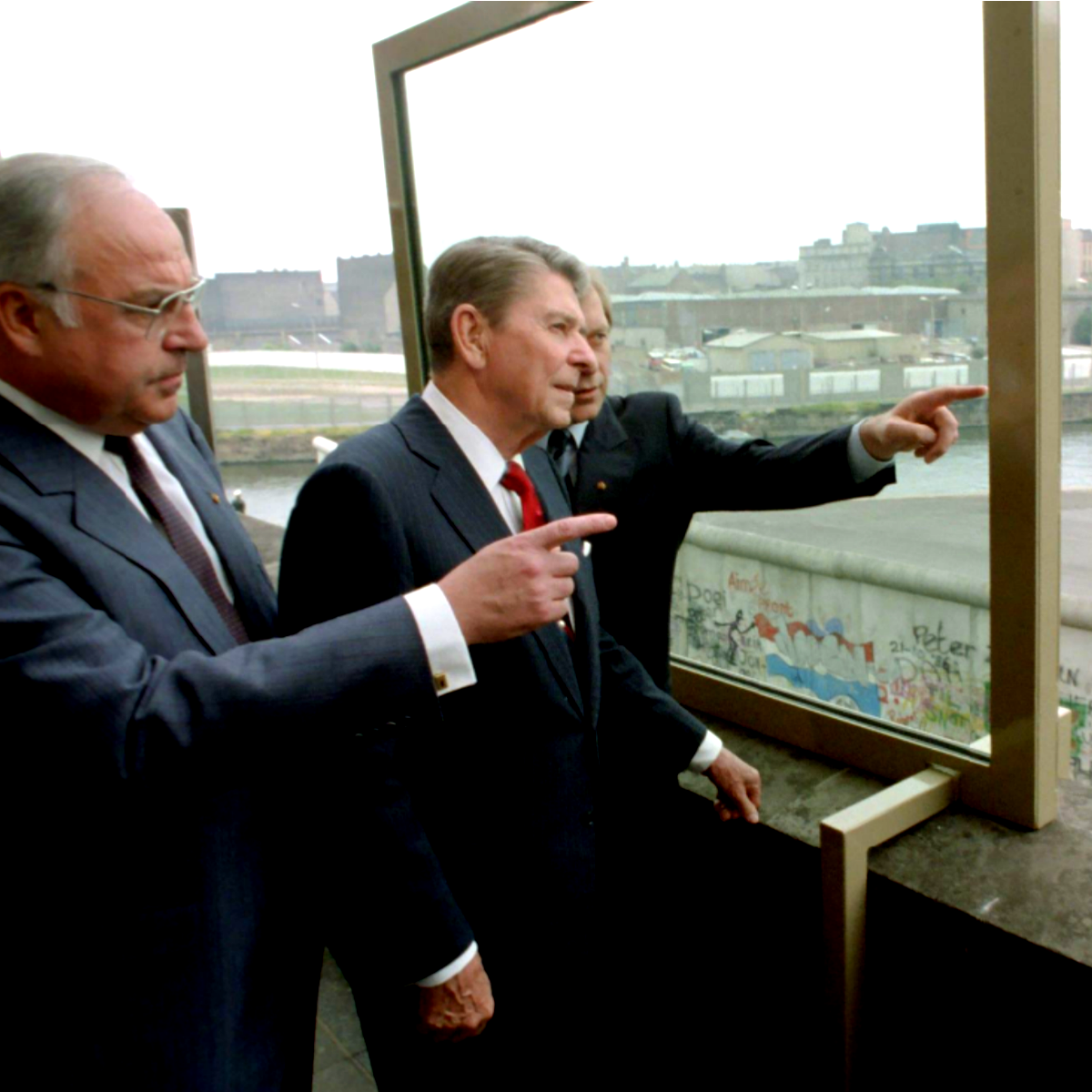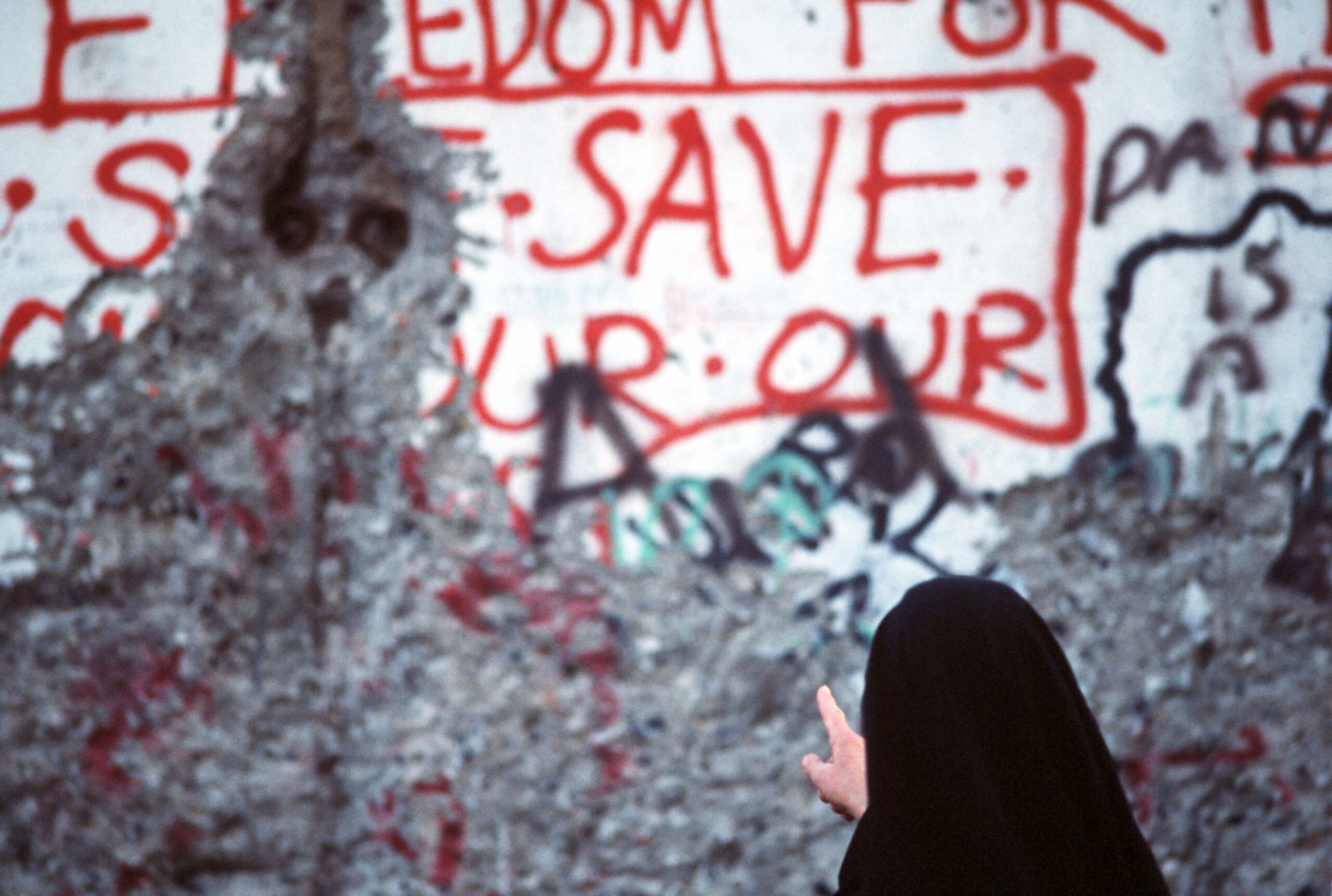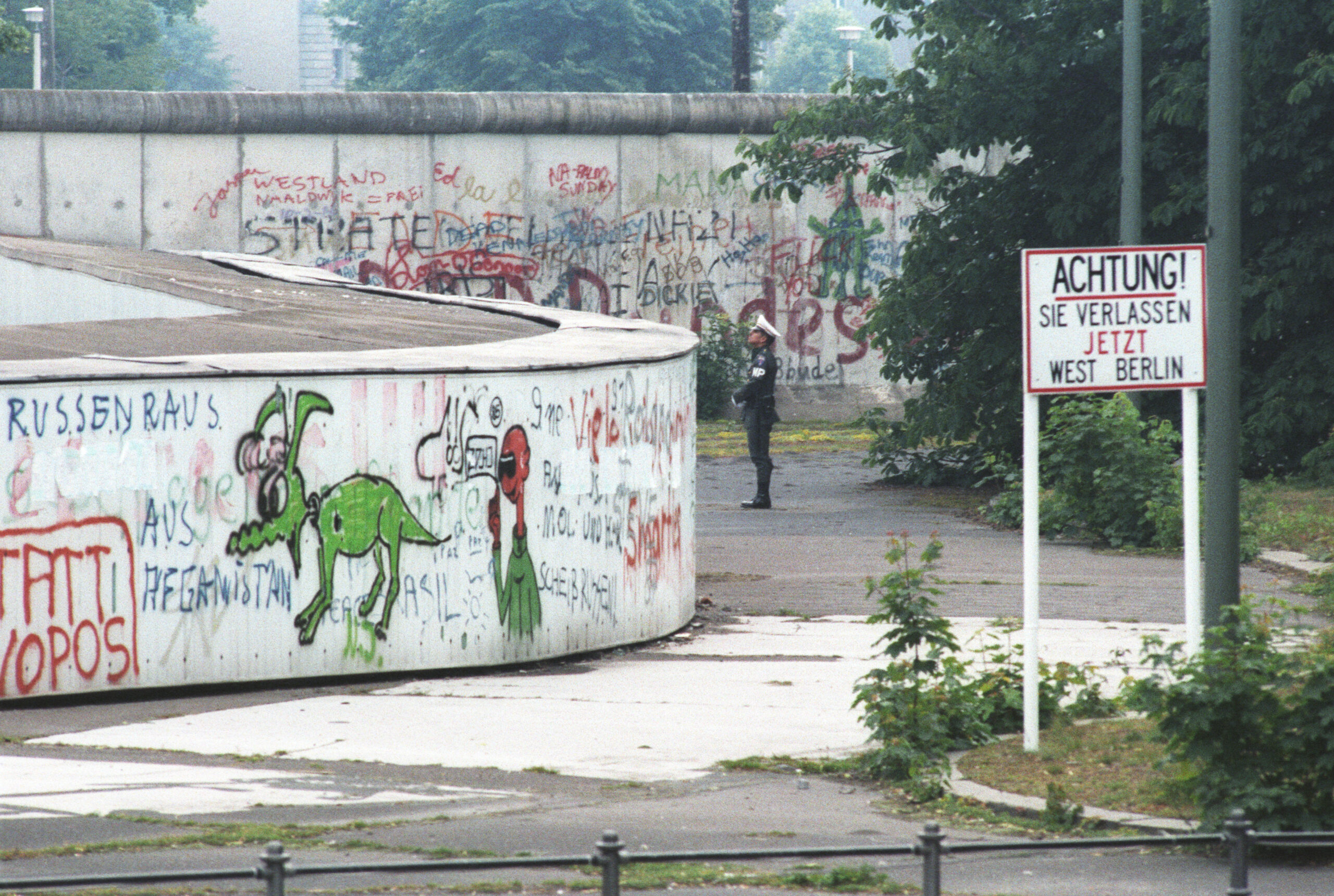Archives Experience Newsletter - August 10, 2021
🇩🇪Tear Down This Wall🇩🇪

An aerial view of a segment of the Berlin Wall
National Archives Identifier: 6437343
It was sixty years ago this week that German citizens awoke to a city divided. East German authorities erected a wall—almost overnight—dividing East Berlin from West Berlin, ostensibly to keep Westerners from entering the socialist state, but in reality, to deter defections from the east to the west. But the city wasn’t the only thing divided by this wall. Families were broken apart, friends were separated, even neighborhoods were split to maintain both political and geographic division.

Dr. Martin Luther King in Berlin, Germany
National Archives Identifier: 175539559
The Berlin Wall stood for twenty-eight years as a physical embodiment of the Iron Curtain. As the Cold War dragged on, it became its own symbol of West versus East and freedom versus oppression. Everyone from U.S. Presidents to Civil Rights leaders visited the wall, and many used their visit as a way of making the divide between American and Soviet values clear.
The National Archives has incredible speeches, photos, film, diplomatic records, and policy documents from the Berlin Wall era. The items showcased this week tell a powerful story of separation, resilience, and the triumph of freedom.

Patrick Madden
Executive Director
National Archives Foundation
PS. Our virtual programs are back!
Apollo 15 at 50: NASA’s Lunar Past & Future
Join us on September 1 at 5 P.M. for a conversation with NASA about driving around the moon fifty years ago, and their plans to return to the moon later this year.
Also in September, the Foundation will join the National Archives with three special programs commemorating the 20th anniversary of the 9/11 attacks.
HOW WE REMEMBER: Recognizing the 20th anniversary of 9/11
A City Divided

By the summer of 1961, East Germans were fleeing the German Democratic Republic in droves through West Berlin. Alarmed by this development, the mayor of East Berlin, Walter Ulbricht, closed the border between the two countries and ordered construction of a wall on August 12, 1961. Between August 13 and 14, East German police and military personnel swiftly closed all access points to West Berlin and then tore up roads and train tracks and built concrete barricades that they topped with barbed wire and guard towers all around the sectors controlled by the Allies and roads that led into West Berlin.
In June of the next year, the East Germans built a second wall 100 meters away and parallel to the first wall. They razed the houses in the area between the two walls and relocated their inhabitants. Then between those walls, they constructed what became known as the “death strip,” which was entirely open and thus offered potential escapees no cover while giving the guards in the towers a clear view of the strip below them. The strip was covered with gravel or sand, so footprints would be clearly visible to the guards. Over the next several years, the Berlin Wall was reinforced with additional concrete and wire.
When the wall went up, people who had family on the other side lost contact with their loved ones. Without a doubt, the human cost of the Berlin Wall over the twenty-eight years it stood is incalculable.
In 2011, the National Archives held a symposium where the building of the Berlin Wall was a key topic. The agenda and info packet for this workshop, “A City Torn Apart: Building of the Berlin Wall”, includes moving illustrations and stories not only about the city, but also about lives that were torn apart by this wall.
Download the packet
(PDF, 52 pages)
Do Walls Work?

An East German guard tower at the Berlin Wall
National Archives Identifier: 6386321
The seemingly endless debate about the need for a better border wall between the United States and Mexico has raised an interesting question: Do walls between countries work?
In the case of the Berlin Wall, the answer is unequivocally yes. Soviet Premier Nikita Khrushchev and U.S. Presidents Dwight D. Eisenhower and John F. Kennedy had been sparring for years about whether West Berlin should remain in Allied hands or should be handed over to the Russians. When the Allies resisted, in early August 1961, Khrushchev threatened to start a nuclear war to settle the matter.
In this frightening atmosphere, the East German authorities built the wall to stop East Germans from crossing into West Berlin in search of freedom and better economic opportunities. It worked. Before the construction of the Berlin Wall, “It is estimated that 3.7 to 4 million East Germans escaped to the West. The daily flow of refugees in the beginning of August was roughly 1,500 East Germans, but after Khrushchev’s ‘bomb-rattling’ speech, the daily number had rose to 1,926,” Neil C. Carmichael, Jr., who worked for NARA’s National Declassification Center, wrote in an essay in “A City Torn Apart: Building of the Berlin Wall,” a publication that accompanied a symposium held at the Archives in October 2011. “On August 11, unbeknownst to all, the last 2,290 refugees seeking the freedoms of the west, entered the Marienfelde reception center in West Berlin. Overnight, in a swift, unexpected manner, the door to freedom closed, and was to remain so for 28 years.”

Gap in the Wall. Communist Border Guards Inspect A Gap in the Berlin Wall Where Two East German Construction Workers Broke Through and Escaped to Freedom In Early April
National Archives Identifier: 6003276
The main reason the Berlin Wall so successfully stopped people from escaping East Germany, however, was that military personnel who were prepared to shoot anyone trying to escape stood guard over it. The number of people who died in the attempt is hotly disputed, but depending on which source one consults, estimates range from less than forty to nearly 400.
One very dramatic and successful escape occurred in April 1962, when two construction workers rammed the wall with a truck and then fled through the gap in the wall. In general, however, the risks of trying to escape persuaded many people to remain in East Germany.
Though the wall kept people in throughout the Cold War, it stood only as strong as the USSR itself during the height of its power. As you’ll learn in the next story, the Berlin Wall did not stand the test of time, as predicted.
A Wall, and Empire, Crumbles

Berlin Wall
National Archives Identifier: 7087579
Once it was built, the Berlin Wall seemed an established fact of life. Despite Ronald Reagan’s famous appeal to Mikhail Gorbachev at the Brandenburg Gate on June 12, 1987—”Mr. Gorbachev, open this gate! Mr. Gorbachev, tear down this wall!” —many people believed the wall would define reality for East and West Germans in perpetuity. On January 18, 1989, Party General Secretary Erich Honecker, who ran the German Democratic Republic (GDR), underscored this view, stating, “The Berlin Wall will still be standing in 50 or 100 years.” Considering what happened later that year, his statement proved to be both erroneous and ironic.
By 1989, the Soviet Union was beset by economic difficulties brought on by massive military spending, the lingering effects of the nuclear disaster at Chernobyl, and the catastrophic defeat of Russian troops in Afghanistan. As the nation became increasingly unable to exercise authority over its satellite states and to provide them with economic aid, the rulers of many of those countries began to question their alliance with the Soviet Union.
In 1988, Lithuania declared its independence from the USSR. This was the first event in a chain reaction that eventually brought the Soviet Union down. In 1989, voters ousted the communist government in Poland, and the Hungarian government started taking down the electrified fence that protected the border with Austria. This triggered a massive exodus of East Germans, who fled the GDR via Hungary. Actions by the East German government to contain the immigrants sparked massive protests by people who wanted to leave the country and counter protests by those who wanted to stay there.
On October 18, 1989, Honecker resigned and Egon Krenz became the new leader of the GDR. The demonstrations and continued flight of thousands of East Germans to the West prompted the new government to revise its travel regulations. On November 9, the East German politburo drafted new regulations that allowed refugees to leave the country via points between East Germany and West Germany, including between East and West Berlin. Through a series of miscommunications, the regulations were announced prematurely, before the border guards had been advised about them. On the East German side of the wall, huge crowds started gathering at the six checkpoints between the two parts of the city and demanded to be allowed to leave. After several chaotic hours, the commander of the Bornholmer Straße border crossing, Harald Jäger, ordered the gates to be opened and people be allowed to pass through.
On the West German side, thousands bearing flowers and champagne awaited the East German refugees. A huge street party erupted—West Germans climbed up on the wall and were joined by East Germans. November 9, 1989, is the day the Berlin Wall came down.
The Berlin Wall fell because of the weakening of the Soviet Union’s power over its satellite nations in the Eastern bloc and because East Germans were fed up with the difficulties they experienced in their daily lives. Battered by the continued flight of its supporting republics and by internal political mayhem, the Soviet Union itself fell apart by the end of 1991.
History Snacks
Writing on the Wall

The West German side of the Berlin Wall was covered with bright graffiti, which is art that is usually created on a wall, frequently in public view and without permission, so in some cases, it is a renegade art form. It can incorporate writing and drawings or graphic designs.

Brandenburg Gate at The Berlin Wall in West Berlin
National Archives Identifier: 75855507
On the East German side, however, maintenance workers labored endlessly to keep the wall blank and pristine. Some graffiti artists managed to paint parts of the wall, but authorities quickly erased their efforts. After the wall fell, the eastern side of the remaining sections were very rapidly festooned with graffiti.

Graffiti on the west side of the Berlin Wall offers a glimpse into East Germany
National Archives Identifier: 6460199
Graffiti is street art and is often controversial. On one hand, it’s often associated with rebellion and defacement of public property, however, graffiti has existed throughout human history. It was prolific in ancient Greek and Roman society and is the only evidence we have of civilizations like those in ancient Syria, Jordan, and Saudi Arabia that date back as far as the first century BC. Graffiti has evolved over time, and in modern day is even purposefully incorporated into urban art scapes.
Like graffiti throughout history, many designs on the Berlin Wall reflected the politics of the time. Thus, the presence and absence of graffiti on the wall from its construction to its demolition could suggest the difference between freedom and oppression.
Scattered Pieces

Section of Berlin Wall
Source: Kennedy Library
Pieces of the Berlin Wall can now be seen all around the world. On the site, three long pieces of the wall are still standing on the north, westernmost, and easternmost parts of it. Some odds and ends, like lampposts and watchtowers, are extant in the city as well. Many pieces have been given to museums and libraries, including the Herbert Hoover, John F. Kennedy, and Ronald Reagan Presidential Libraries in the U.S. Still other pieces were stolen for souvenirs, and some were sold.

Words and a Wall: Remembering the fall of the Berlin Wall
Source: NARA’s Hoover Heads blog












